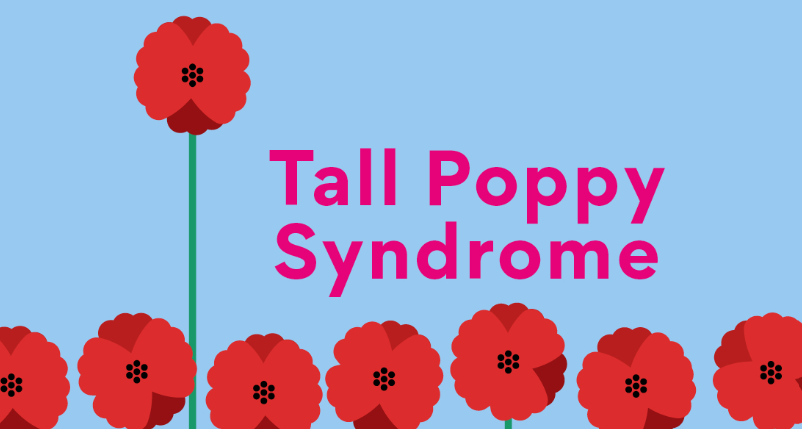Setting Boundaries in the Workplace as a Neurodivergent Adult
Redefining Boundaries as Limits, Needs, and Self-Care
"Boundaries are the distance at which I can love you and me simultaneously." – Prentis Hemphill
Boundaries are often thought of as walls or fences that create rigid barriers between ourselves and others. However, for many neurodivergent adults, boundaries can feel more like lines in the sand—easily washed away by waves of expectation, social pressure, and unspoken rules. I recall times when I ignored my own limits at work, agreeing to just one more meeting or pushing my focus well beyond its natural rhythm. As a result, I would end up feeling drained and resentful.
That lived experience taught me something vital: what if, instead of seeing boundaries as "rules we set," we reframed boundaries as limits—the natural edges of what our nervous system, energy, and values can consistently hold?
You may also appreciate my reflection on the importance of setting boundaries.
This reframing is at the heart of neurodivergent work self-care: not pushing ourselves to the point of collapse, but honouring the real edges of what we can give.
For me, learning to see boundaries as limits was a life-changing experience. Instead of feeling like I was failing by not keeping up with every demand, I began to notice the quiet signals of exhaustion and overstimulation as invitations to care for myself differently. What once felt like weakness became a way to honour my capacity and show up more authentically. Boundaries stopped being about letting people down; they became about not letting myself down.
Why Workplace Boundaries Matter for Neurodivergent Adults
Every human needs limits. Our bodies need sleep, our minds need rest, and our hearts need space. For neurodivergent adults—whether ADHD, autistic, AuDHD, or gifted/2e—this truth is magnified.
Workplaces often demand endless flexibility, social stamina, or speed of output that doesn't match neurodivergent rhythms. Without clear boundaries, the result is often burnout, resentment, and disconnection from ourselves.
Boundaries here become less about drawing hard lines for others and more about recognizing the limits of what we can sustainably tolerate.
Examples might include:
- Saying no to back-to-back meetings when transitions are overwhelming
- Protecting focus time from constant Slack or email notifications
- Limiting the number of social events you commit to each week
- Clarifying realistic timelines instead of masking struggles until burnout
Framing boundaries as limits makes them less about rejection and more about workplace boundaries for neurodivergent people, a practice of protecting our nervous system and capacity.
Reflection Question: Which of your current workplace habits feels unsustainable?
Therapeutic Insights for Setting Boundaries at Work
Aligning Limits with Values (ACT)
Acceptance and Commitment Therapy (ACT) reminds us that boundaries are less about control and more about alignment. It invites us to ask:
What matters most in my work life?
If creativity, integrity, or learning are core values, then boundaries are simply the edges that keep those values alive. For example, declining last-minute tasks may protect creativity, ensuring your best energy isn't spent on urgency.
This perspective is especially useful when setting boundaries with ADHD, where impulsivity or people-pleasing may otherwise lead to overcommitment.
Reflection Question: What values guide your work life? Which limits protect those values most effectively?
Communicating Boundaries Effectively
Dialectical Behaviour Therapy (DBT) offers interpersonal effectiveness skills. One tool is DEAR MAN:
- Describe the situation factually
- Express how you feel
- Assert your needs clearly
- Reinforce why the boundary matters
- Stay Mindful of your goal
- Appear confident even if you feel unsure
- Negotiate if needed
This approach helps us express needs without guilt. Instead of: "I can't handle this meeting," you might say: "I need uninterrupted time to focus on this project. Could we block two hours without meetings? This will allow me to be more focused with my time, which improves my output."
For many with ADHD, this kind of structured skill makes workplace boundaries for neurodivergent adults more transparent and sustainable.
Saying No with Self-Respect
When we need to say no—especially when guilt, fear of rejection, or people-pleasing show up—the FAST skill helps us stay grounded in self-respect.
FAST stands for:
- Fair – Be fair to yourself and the other person. Acknowledge both perspectives without minimizing your own needs
- Apologies (don't overdo them) – Apologize only when you've done something wrong, not for existing, having limits, or saying no
- Stick to values – Stay true to what matters to you. Don't compromise your integrity just to avoid discomfort
- Truthful – Be honest and direct. Avoid exaggeration, excuses, or people-pleasing statements that hide your actual position
This approach keeps our "no" firm but respectful.
Instead of: "I'm sorry, I know you're short-staffed, but I guess I can stay late again."
You might say: "I understand this week has been busy, but I need to leave on time today to take care of personal commitments. I can revisit extra hours later this week if needed."
For many neurodivergent adults—especially those with ADHD or autism—FAST helps counteract the habit of over-apologizing or self-abandoning to avoid conflict.
It turns saying no into an act of self-respect rather than rejection, helping workplace and relational boundaries become clearer, fairer, and more sustainable.
Reflection Question: How comfortable are you with voicing your needs directly? Which workplace situation could you practice DEAR MAN with this week?
Releasing Guilt and Embracing Self-Kindness
For many neurodivergent adults, guilt surfaces when we say no. We fear disappointing others, being perceived as lazy, or not "pulling our weight." Compassion-Focused Therapy (CFT) reframes this struggle: self-kindness is not a form of selfishness.
One way to visualize it is to imagine drawing a circle around yourself—a soft, protective boundary that allows you to give and receive care without collapse. That circle isn't shutting others out; it's preserving your ability to show up authentically.
This shift is key in neurodivergent work self-care, where compassion helps us meet guilt with kindness rather than self-criticism.
Reflection Question: How might compassion for yourself soften the guilt of setting limits?
Listening to the Nervous System
Sometimes, it isn't logic but physiology that tells us when our limits are crossed. Polyvagal theory teaches us that when boundaries are continually ignored, our nervous system shifts into fight, flight, or shutdown.
Notice the signals: a racing heart before a meeting, irritability after too many conversations, or the flat, numb exhaustion that comes with overexertion. These cues tell us our system is at capacity. Setting boundaries in those moments is not a preference; it's nervous-system care.
Reflection Question: What nervous system cues tell you that you've reached a limit?
To explore authenticity at work, you may find unmasking in everyday life helpful.
The Paradox of Workplace Boundaries
Boundaries seem to divide, yet in truth, they sustain connection. Without them, resentment builds. With them, we show up more authentically—not as masked, exhausted versions of ourselves, but as people offering what we can, fully and sustainably.
For neurodivergent adults, embracing limits is not failure. It is truth-telling: this is the shape of my life, the rhythm of my nervous system, the reality of my care.
Reflection Question: What does "showing up sustainably" mean to you?
Practical Tips for Workplace Boundaries
- Start Small – Protect 30 minutes of focus time each day before moving towards more sustainable and often bigger shifts
- Use Clear and Specific Language – Instead of "I'm too busy," say, "I need uninterrupted time for this project until 2 PM."
- Anchor Boundaries in Values – Remind yourself: "This isn't about saying no; it's about protecting my creativity, focus, or energy"
- Notice Physical Cues – Tightness in the chest or fatigue after a meeting may be your body's way of saying, "A limit has been crosse.d"
- Rehearse Ahead of Time – Practicing scripts helps reduce anxiety when asserting your needs
- Reframe Boundaries as Care – Remember: limits are not barriers; they are invitations to healthier connection
Reflection Question: What is one small step you could take this week to begin honouring your limits at work?
Setting boundaries in the workplace is not about being difficult or inflexible—it is about living in alignment with your nervous system, values, and truth. For ADHD, autism, or other neurodivergent experiences, boundaries are really about honouring the limits of what we can consistently sustain.
At Becoming Yourself neurodiversity therapy, we understand that honouring limits is both an act of self-care and a path toward authentic, sustainable connection with others. That's what makes neurodivergent work self-care not optional, but essential.
Ready to Honour Your Limits and Embrace Authentic Self-Care?
If these experiences resonate, my page on late-diagnosed ADHD support may offer additional insight on energy, capacity, and workplace expectations.
Whether you're learning to say no without guilt, aligning your work life with your values, or simply finding ways to show up more authentically, therapy can provide the tools and validation you need.
Take the first step toward becoming yourself.
Contact us to schedule a consultation and discover how neurodiversity-affirming therapy can help you build boundaries that protect your energy, honour your nervous system, and support your authentic self.
Your limits are not weaknesses; they are invitations to care for yourself more deeply.
FAQ: Workplace Boundaries and Self-Care for Neurodivergent Adults
Q1: Why are workplace boundaries for neurodivergent people especially important?
A1: Many workplaces reward constant availability, multitasking, and social flexibility. For neurodivergent adults, these demands often clash with their natural rhythms, leading to burnout. Boundaries help protect our focus, energy, and authenticity.
Q2: How can I set workplace boundaries with ADHD without seeming difficult?
A2: Structured communication helps. Using DBT's DEAR MAN skill allows you to express needs clearly and respectfully. For example, "I'll be more effective if I have two hours of uninterrupted time" shows that your limit is about sustainable contribution, not refusal.
Q3: What's the difference between boundaries and limits?
A3: Boundaries are often described as external rules we set for others (they are often more about protecting ourselves than impacting another's behaviours; we are not seeking to control others), while limits describe the natural edges of what we can tolerate and sustain. Reframing boundaries as limits helps emphasize the importance of nervous-system care and self-compassion.
Q4: How do I handle guilt when setting boundaries at work?
A4: Guilt is common, especially when conditioned to prioritize others' needs. Compassion-focused therapy strategies, such as visualizing boundaries as a circle of care, can be helpful. Saying no to protect your energy is also saying yes to meaningful contribution.
Q5: How can therapy support neurodivergent work self-care?
A5: Therapy provides tools to identify values, notice nervous-system cues, and practice communication strategies. It helps reduce guilt and reframe boundaries as strengths rather than weaknesses, making them more sustainable. Working with a neurodiversity-affirming therapist can help you develop personalized strategies that honour your unique needs.
Q6: What are the small steps to begin setting boundaries at work?
A6: Start with micro-shifts: mute notifications for 30 minutes, decline one optional event, or request a minor workload adjustment. Over time, these small steps build confidence and sustainable rhythms.
You may also find value in Substance Use & Healthier Coping.

Michael Holker HBA, BSW, MSW
Michael Holker, MSW, RSW, is the compassionate heart behind Becoming Yourself Counselling. Discovering his own neurodivergence later in life shaped his existential, humanistic, and strengths-based approach to therapy. Guided by his lived experience, Michael helps neurodivergent individuals move beyond self-criticism toward self-understanding, self-compassion, and self-acceptance. His work invites clients to honour their journeys, embrace their resilience, and reconnect with their authentic selves, cultivating a life of greater alignment and meaning.

.jpg?width=500&height=252&name=setting%20boundaries%20content%20image%20(1).jpg)

